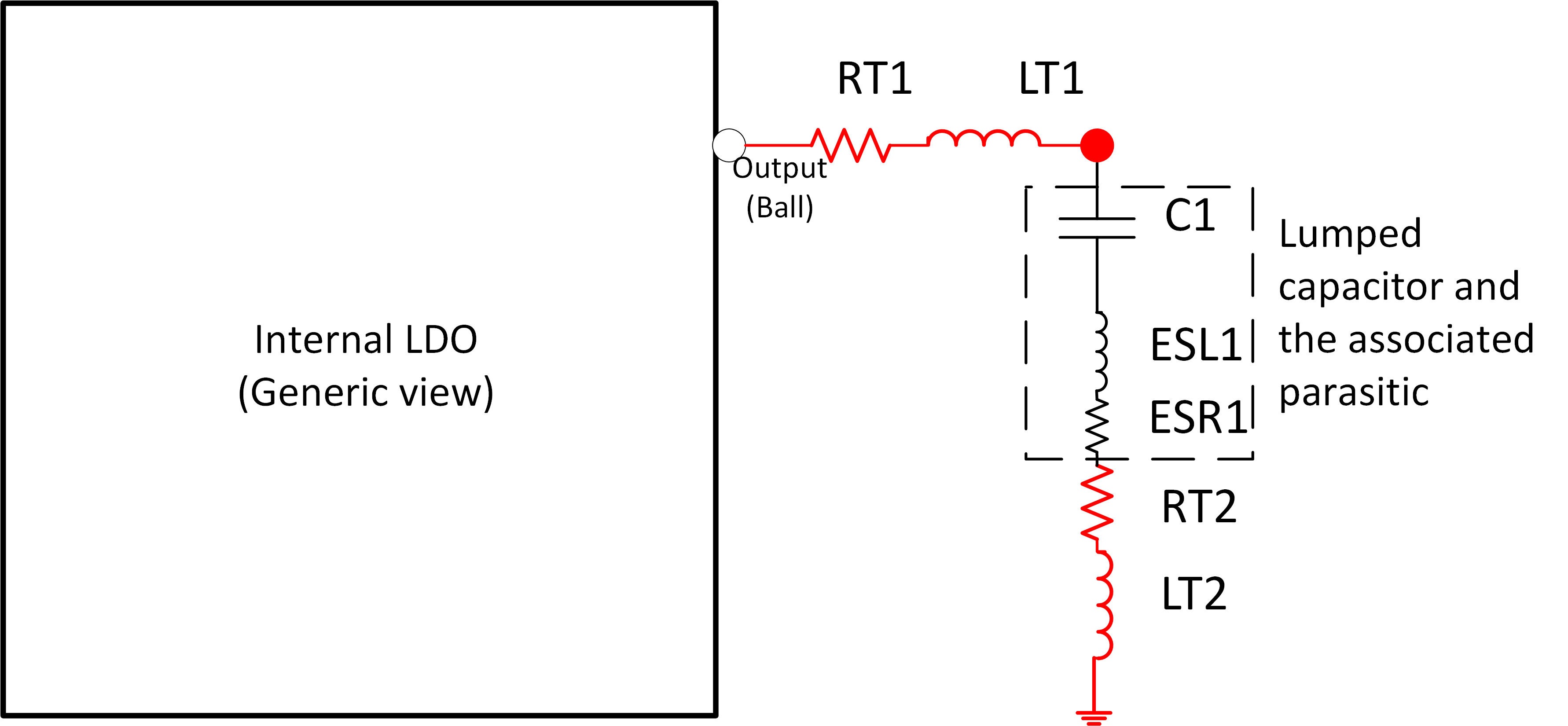SWRS323 November 2023 – April 2024 IWRL6432AOP
ADVANCE INFORMATION
- 1
- 1 Features
- 2 Applications
- 3 Description
- 4 Functional Block Diagram
- 5 Device Comparison
- 6 Terminal Configurations and Functions
-
7 Specifications
- 7.1 Absolute Maximum Ratings
- 7.2 ESD Ratings
- 7.3 Power-On Hours (POH)
- 7.4 Recommended Operating Conditions
- 7.5 VPP Specifications for One-Time Programmable (OTP) eFuses
- 7.6
Power Supply Specifications
- 7.6.1 Power Optimized 3.3V I/O Topology
- 7.6.2 Power Optimized 1.8V I/O Topology
- 7.6.3 BOM Optimized 3.3V I/O Topology
- 7.6.4 BOM Optimized 1.8V I/O Topology
- 7.6.5 System Topologies
- 7.6.6 Internal LDO output decoupling capacitor and layout conditions for BOM optimized topology
- 7.6.7 Noise and Ripple Specifications
- 7.7 Power Save Modes
- 7.8 Peak Current Requirement per Voltage Rail
- 7.9 Supported DFE Features
- 7.10 RF Specification
- 7.11 CPU Specifications
- 7.12 Thermal Resistance Characteristics
- 7.13 Antenna Radiation Patterns
- 7.14 Antenna Positions
- 7.15
Timing and Switching
Characteristics
- 7.15.1 Power Supply Sequencing and Reset Timing
- 7.15.2 Synchronized Frame Triggering
- 7.15.3 Input Clocks and Oscillators
- 7.15.4 MultiChannel buffered / Standard Serial Peripheral Interface (McSPI)
- 7.15.5 RDIF Interface Configuration
- 7.15.6 General-Purpose Input/Output
- 7.15.7 Controller Area Network - Flexible Data-rate (CAN-FD)
- 7.15.8 Serial Communication Interface (SCI)
- 7.15.9 Inter-Integrated Circuit Interface (I2C)
- 7.15.10 Quad Serial Peripheral Interface (QSPI)
- 7.15.11 JTAG Interface
-
8 Detailed Description
- 8.1 Overview
- 8.2 Functional Block Diagram
- 8.3 Subsystems
- 8.4 Other Subsystems
- 8.5 Memory Partitioning Options
- 8.6 Boot Modes
- 9 Monitoring and Diagnostics
- 10Applications, Implementation, and Layout
- 11Device and Documentation Support
- 12Revision History
- 13Mechanical, Packaging, and Orderable Information
Package Options
Mechanical Data (Package|Pins)
- AMY|101
Thermal pad, mechanical data (Package|Pins)
Orderable Information
7.6.6.1 Single-capacitor rail

Figure 7-4 Parasitic offered by different portion of the output path (for one capacitor)
1.2V Digital LDO requires one decoupling capacitor with a typical value of 4.7uF. The parasitic offered by different portion of the output path is illustrated in Figure 7-4. “RT1” and “RT2” are parasitic resistances offered by the ball to capacitor lead trace and the ground trace respectively. Similarly, “LT1” and “LT2” are parasitic inductances offered by the ball to capacitor lead trace and the ground trace respectively. “ESL1” and “ESR1” are the effective series inductance and resistance of the decoupling capacitor. Table 7-5 gives the minimum, maximum and typical values of the capacitance and the parasitic.